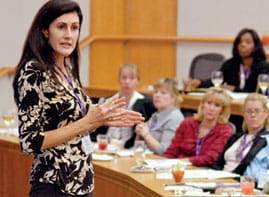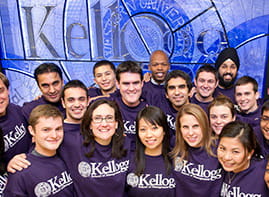What to do with your problem team member
It's not always just one black sheep who needs fixing
By Prof. Leigh ThompsonEvery team seems to have an alpha member — someone who is naturally dominant. Every team seems to also have a problematic or dysfunctional team member. Let's call that person a delta.
Take the case of Matthew, an executive at a large company in one of my courses last year. Matthew described the delta member on his team — a man he called Neal. According to Matthew, Neal was a "narcissistic, passive-aggressive egomaniac who was impervious to criticism or personal development."
"How long has Neal been a problem on your team?" I asked Matthew.
Matthew sighed, "Five years."
I asked Matthew what steps he had taken to deal with Neal. He had confronted Neal several times and told him he needed to change, and Neal had grudgingly agreed. But nothing changed: Neal continued to be dysfunctional. Matthew tried talking to Neal a few more times, but to no avail. What was Matthew doing wrong?
The mistake that we see leaders make most often is that they want to "fix" the problem team member, much akin to taking a car to the shop. However, it is likely that the entire car needs a tune-up. Leaders should resist the urge to ambush the delta member and instead, follow a four-step approach:
- Reassess and, if necessary, reassign the roles. What are the work tasks? What are the roles and responsibilities? More often than not, by changing one or more of these factors, the problem can be solved. Case in point: In one university task force, one team member was not contributing and was not responding to communications. When we queried this team member, we learned he felt resentful because he did not want the responsibility of scheduling the meeting room or managing the calendar. Instead, he wanted to focus on conducting an important competitive analysis. Once he was alleviated of "secretarial" responsibilities, he became a productive and positive contributor.
- If you still have a problem, revise the team process. How do team members communicate? What are the norms of engagement? What is the meeting style? One member on a financial services team was not contributing, lacked motivation and had no energy. The leader tried an experiment and moved the late-afternoon team meetings to the mornings. The "dysfunctional" team member became a high producer. On another organizational team, a newcomer stopped contributing because the senior team members arrived 10 minutes late for every meeting. The issue of punctuality was raised in a meeting and the group agreed to hold one another accountable for arriving on time. In many companies, members became resentful when they see others using their smart phones during meetings and openly multitasking. At Edmunds, team leaders bring in a large basket at the beginning of each meeting and collect all phones, computers and tablets, from the CEO on down. The result is a more engaged group.
- Give everybody a crash course on how to engage in healthy conflict. Problem team members often emerge in groups because conflict is being repressed. Team members often feel that they need to be polite and accommodating. Group researchers call this the politeness ritual, and it essentially leads to a superficial small talk with no one really knowing where they stand. Charlan Nemeth and her colleagues coached some teams to follow debate rules, while other teams followed brainstorming rules or did not have any particular rules. The teams who followed debate rules suggested more ideas and better ideas. This was replicated across different cultures.
- As a final resort, invite the team to coach each other. Don't gang up on one person; put everyone under the microscope. We've developed an approach at Kellogg called 50-50 Qualitative Feedback, in which all team members give each other one piece of positive feedback and one piece of development feedback using simple notecards. My guiding rules are to write the feedback in a way you would want to see it for yourself. As the facilitator, I collect all the cards, distribute them into envelopes, vet anything that is unnecessarily vicious and carefully instruct members to not reveal or even guess who said what. On one occasion, I worked with the senior leadership team of a large health care organization. Before everybody opened their envelope, I instructed each team member to anticipate the feedback they thought they would receive. Everybody then summarized the positive and the critical feedback they received and developed a personal action plan for change.
The bottom line: Think of the delta member of your team as a "check your engine" light. Open the hood, roll up your sleeves and test all systems.
Image by
Leon Riskin under a
Creative Commons license






